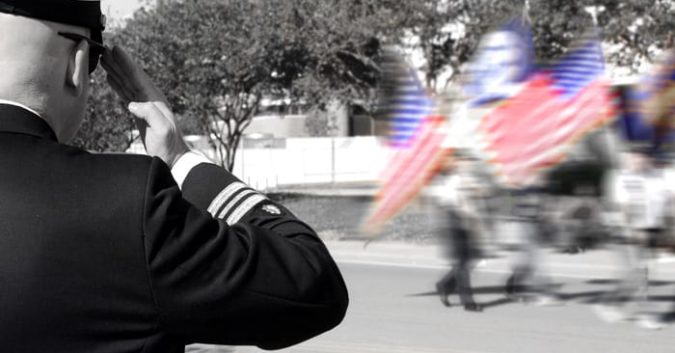Most Americans have a family member or friend who is a veteran or know someone who has been on active duty or in a combat situation. While we honor the sacrifices our soldiers make for our country, we sometimes forget how service men and women may sacrifice their lives and their health. Many of these individuals develop invisible disabilities and illnesses due to their time in the military, which affects their lives long after they have been discharged.
One such group of veterans are those who have been exposed to asbestos, and, as a result, developed mesothelioma or another debilitating asbestos-related disease. Asbestos used to be a prominent building material for all branches of the military. It was used as fire retardant material on military bases and in barracks, as well as in tanks, trucks and every Navy ship built in the 20th century.
Given this high rate of exposure to asbestos over many years, there is little wonder why veterans account for 33% of cases of mesothelioma. At the same time, it is not always easy to connect this illness to asbestos exposure, because the disease takes 2-4 decades to develop.
This delayed reaction means that asbestos companies could hide the dangers of this carcinogen for years. Now veterans are among those paying the price for that negligence.
Fighting the Invisible Enemy
After the 1970s, when the hazards of asbestos became more widely known, the military removed most of the asbestos from buildings and vehicles. At the same time, some asbestos is still in place in older buildings and vehicles, since it is impractical or difficult to extract. Even a small amount of exposure to tiny asbestos fibers presents a health risk.
Veterans at the greatest danger for developing mesothelioma and other asbestos-related diseases are ones who served in WWII, Korea and Vietnam. At the same time, the Department of Veterans Affairs (VA) has alerted those who served in the Middle East, Iraq and Southeast Asia.
These individuals could have come into contact with asbestos if they were around older buildings that were damaged and contained asbestos, or if they worked in shipyards, repairing vehicles or in construction.
The Heavy Toll on the Navy
Problems with mesothelioma among those who served in the Navy have been particularly devastating and widespread. Because so much asbestos was involved in shipbuilding, those who served before 1980 were most likely exposed to asbestos. The process of asbestos removal from U.S. Navy vessels and vehicles also took years to accomplish, meaning that some veterans may have been exposed as late as the early 1990s.
Asbestos was used to insulate pipes and wiring, and could also be found in boiler rooms, engine rooms, mess halls and sleeping quarters. Asbestos was also used to insulate submarines, where it often degraded. In areas without good air flow, asbestos particles could circulate for long periods of time.
Those who worked in shipyards were also at high risk, whether they were constructing ships or taking them apart. Asbestos was used in materials throughout the building process, including cables, caulk, floor tiles, insulation, paneling piping, tubing, valves and other insulation materials. Mechanics were another group that had high exposure, since they worked with pipes and valves that contained asbestos.
Knowing the Symptoms
One reason why mesothelioma is so lethal is that it’s difficult to diagnose early. Because the symptoms are much like other respiratory problems, it’s important to keep possible asbestos exposure in mind and let healthcare providers know to test for this deadly disease.
An individual’s symptoms may vary with the type of mesothelioma they have developed. Chest pain is common with pleural and peritoneal mesothelioma, while peritoneal mesothelioma can also involve abdominal pain. Individuals may develop wheezing and a dry cough, have difficulty exercising, be short of breath and easily contract respiratory infections.
Mesothelioma is much easier to treat when it is discovered early, so veterans and their families must keep this possibility in mind when seeking diagnoses. Above all, it’s critical that we do not forget these invisible sacrifices made by our veterans. As a country we must do our best to honor and protect the health and happiness of those who have risked so much for us.
